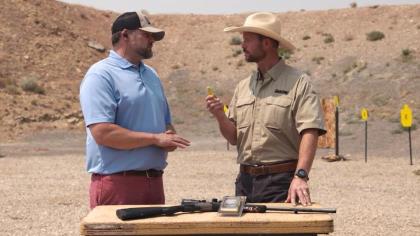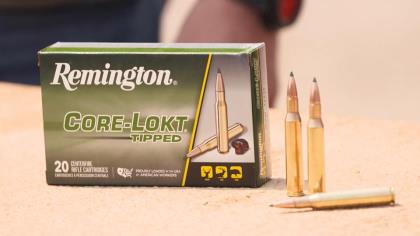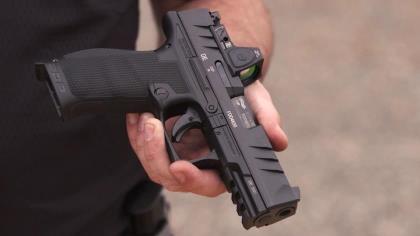While bolt-action .22 Rimfire rifles are commonplace today, it took quite a long time for that action type to arrive on the scene.
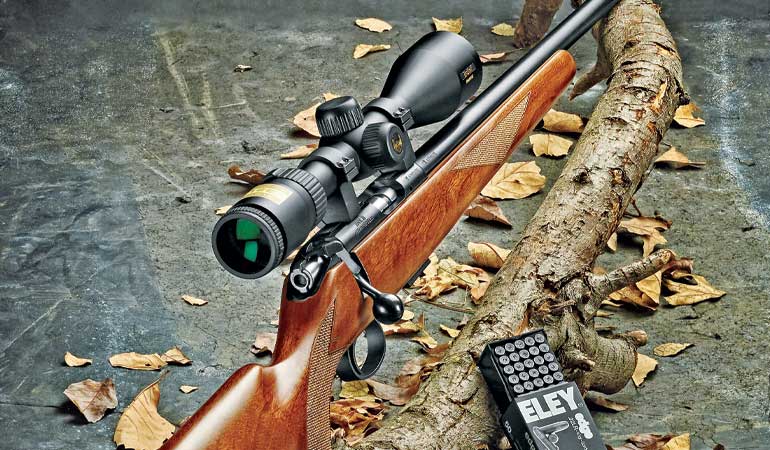
Repeating rifles in .22 Rimfire of American design have been with us for a very long time, but it took a while for the bolt action to arrive. The first repeater on the scene was the Winchester Model 1873 lever action introduced during that year. At that time the .22 Long Rifle had yet to be introduced by J. Stevens Arms & Tool Co., so during the first 14 years of production, the ’73 was available only in .22 Short and .22 Long.
Winchester’s second repeater, the slide-action Model 1890, was available in .22 Short, .22 Long, .22 Long Rifle, and .22 WRF. It was followed by the Model 1903, a semiautomatic rifle chambered only for the “22 Winchester Automatic Rim Fire Smokeless” cartridge. During the first two decades of the 20th century, Winchester introduced several .22 Rimfires on turnbolt actions, but all were inexpensive single shots loved and cherished by farm boys all across America.
Winchester finally got around to offering a bolt-action repeater in 1920, and the company did it big time with the Model 52 target rifle. During the next 60 years, it was offered in many variations, including the Sporting Rifle, which still ranks as one of the all-time great small-game guns. The Model 52 was discontinued in 1980 and was followed by several less expensive bolt-action repeaters.
Remington introduced its first multiple-shot bolt action, the Model 34, in 1932. Many others followed, with the Model 40X (1955) and the Model 540/541 (1972) considered by many to be the cream of the crop out of the Ilion, New York, factory. The 40X was Remington’s rather belated target-rifle reply to the Winchester 52, and the 540/541 series was aimed at the Winchester Model 75. The Model 541-T was less expensive than the 40X, and while not as accurate, mine carves out extremely small groups when fed match ammo. One of the more interesting rifles from Remington was a member of the company’s “Nylon” family of rifles called the Model 11. It and its lever-action and semiautomatic mates came and went during the 1960s.
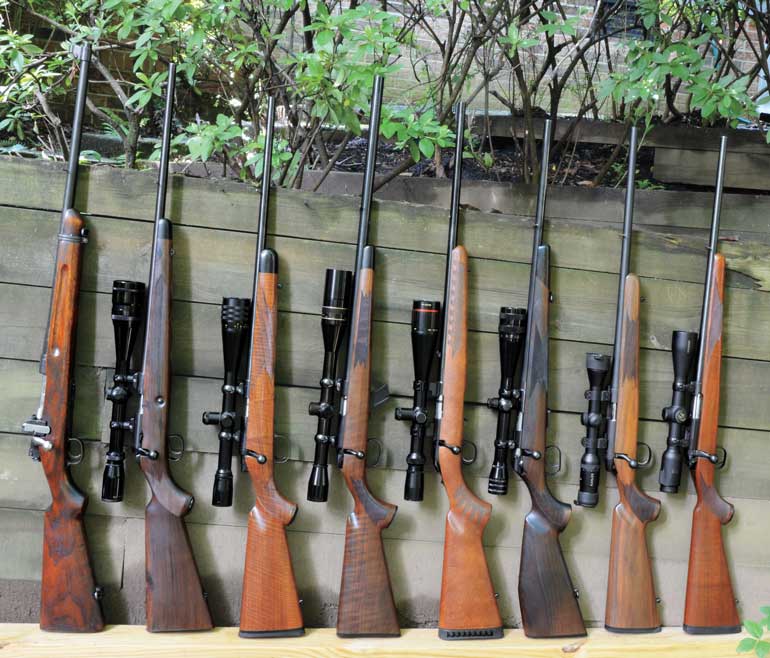
Marlin’s first bolt-action repeater, the Model 80, was introduced in 1936, and that company went on to produce more rifles of the type than any other company in the United States. In those days, Harrington & Richardson, Mossberg, and Stevens were also big players in the game. When Daisy introduced its Legacy 2202, I looked into my crystal ball and saw immediate success. After all, many of us started out with BB guns built by Daisy, so it seemed only logical that everyone would want a .22 Rimfire built by the same company. Unfortunately, no.
The very first repeating rifles had detachable box magazines of single-column design, but later, the tubular magazine also had its time in the limelight. And while most tubular magazines were attached beneath the barrel, Winchester chose to place it inside the buttstock of the 1960’s Model 141. Like the classic Browning Autoloading Rifle of yesteryear, it was loaded from the rear. Some companies offered the same model with either type of magazine, and the one with a tubular magazine was usually a bit more expensive because it cost more to build.
In addition to having a huge capacity advantage, the tubular magazine won’t go astray in the field whereas the detachable design was fated to be lost. Filling that long tube with cartridges adds enough weight to deflect the muzzle of the barrel slightly downward, and while there may be some difference in bullet points of impact between the first shot and the last shot in that type of magazine, most rabbits, bushytails, chipmunks, and empty tin cans have failed to notice through the years. An exposed tubular magazine should be more easily damaged by hard knocks than the detachable magazine, but a few decades of exploring used-gun racks in gunshops have revealed very few that actually were.
Most rifles today have detachable magazines, and with the exception of the rotary magazine of Ruger’s Model 77/22 (and its imitators), most are of single-stack design. To my eyes, a rifle with a detachable magazine is a bit more pleasing to the eye than one with a tubular magazine hanging beneath its barrel. Another advantage of detachable magazines is quick reloading: simply replace the empty with the full and keep on shooting. On the negative side, with that little box magazine removed, its feed lips are subject to damage, although it is not a common event. When the capacity of a single-stacker exceeds five or six rounds, it extends below the belly of the rifle to interfere with one-hand comfortable carry. It also seems to vary more in reliability from maker to maker than a tubular magazine. Some are most definitely easier to load than others.

The All-Important Chamber
Most factory rifles have a sporting chamber dimensioned large enough to ensure trouble-free functioning even when the chamber becomes quite dirty. At the opposite extreme is the match chamber that has much tighter dimensions. In addition to having a diameter that more closely matches that of the .22 Long Rifle case, its shorter length causes the bullet of a chambered round to be engaged by the rifling. That along with the higher quality of match-grade barrels improves accuracy far beyond what is commonly achieved with a barrel of lesser quality having a sporting chamber.
Competition rifles made by Anschutz, Bleiker, and others have match chambers, and match-grade barrels with the same type of chamber are available from several sources. (Lilja is one of the most popular.) A couple of my small-game rifles have match chambers, but be aware of the fact that with the bullet of a chambered round wedged tightly into the rifling, the extractor of a rifle may slip over the rim of a chambered round should unloading become necessary when crossing a fence or for other reasons of safety.
The shorter the match-dimensioned chamber, the deeper the bullet seats into the rifling of the barrel. As you can see in the Pacific Tool & Gauge reamer chart shown on page 42, the chamber introduced by Winchester many years ago in the Model 52 is the shortest commonly available. When a cartridge is pushed into it, an additional 0.020 inch of its bullet is engaged by the rifling as compared to a standard match chamber.
Dimensions of the Bentz chamber are tighter than those for the sporting chamber but a bit more generous than for the match chamber. And while its length places the bullet of a chambered cartridge closer to the rifling than in a sporting chamber, it is not engaged by the rifling as in a match chamber. This is why it is often chosen when seeking the best accuracy possible from a semiautomatic rifle. As illustrated by the reamer chart, there are many options in chambers. Some are from firearms manufacturers and barrelmakers, while others are from gunsmiths who specialize in building extremely accurate rifles.
Before leaving the subject, I will add that due to their longer cases, Aguila Super Maximum as well as CCI Stinger and CCI Quik-Shok should be fired only in a chamber with sporting dimensions or in a custom chamber sized specifically for them. Chambering one of those cartridges in a match, Bentz, or other short chamber forces the mouth of the case hard into the rifling leade, and that increases the grip of the case on the bullet for a dramatic increase in chamber pressure.
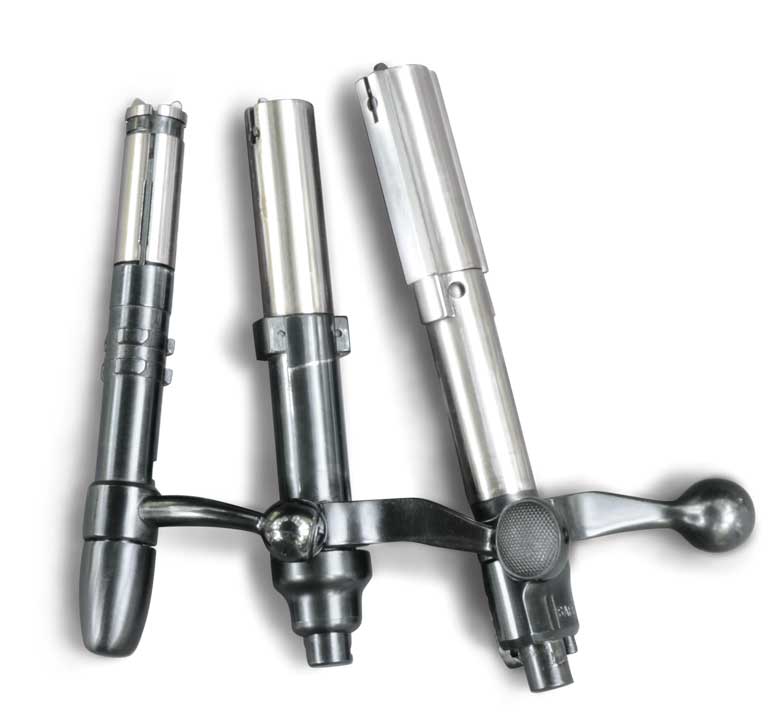
Lockup Variations
The maximum chamber pressure for the .22 Long Rifle cartridge is only 24,000 psi, so the strongest of actions is not required for containing it during firing. Breech lockup in thousands of rifles chambered for it through the decades is accomplished by nothing more than the root of the bolt handle bearing on the front of the receiver bridge, and it has proven to be quite satisfactory. The .22 WMR operates at the same pressure, but due to greater surface area of its case, it pushes against the bolt with a bit more force. The same goes for the .17 HMR at 26,000 psi.
Most centerfire cartridges operate at considerably higher pressures, so a front-locking bolt is best for them because it minimizes momentary receiver stretch and bolt compression. The use of lugs at the front of the bolt requires positioning a detachable magazine quite some distance from the breech end of the barrel, and coaxing the stubby .22 LR cartridge across that space and into the chamber is an engineering challenge commonly eliminated by positioning the locking lugs toward the rear of the bolt. Back thrust applied to the bolt by rimfire cartridges is much lower than for most centerfires, so rear-locking bolts have proven to be quite successful through the years.
While root-of-bolt-handle lockup alone works fine on plinking and hunting rifles, a rifle with opposed locking lugs does a better job of concentrically stabilizing a bolt during firing, and builders of upper-level rifles tend to utilize them. Winchester handled that very nicely with the Model 52 by adding a locking lug on the opposite side of the bolt, adjacent to the root of the bolt handle. Through the years that same style of lockup has been seen on quite a few other high-quality rifles from Cooper (Model 57M), Kimber (Model 82), Remington (Model 504), Anschutz, and others.
The rear locking lugs of some .22 Rimfire rifles were made more massive than they had to be for various reasons. When designing the Model 40X target rifle during the early 1950s, Mike Walker of Remington built it around the Model 722 centerfire action. He gave the rifle a two-piece bolt of the same diameter as the Model 722 with the front, non-rotating section containing twin extractors and the rear section having extremely large, dual-opposed locking lugs.
When designing the Model 77/22 during the early 1980s, engineers at Ruger envisioned a future centerfire version of the same rifle chambered for the .22 Hornet, .44 Remington, and others. To handle the additional strain, they utilized the design of the Model 40X bolt.
Back to Remington, the Model 788 centerfire introduced in 1967 has nine rear-positioned locking lugs. Remington introduced its 500 series of rifles during that same year, and the bolts of all of them, including those in 5mm Remington Magnum, were a scaled-down version of the Model 788 bolt except with six locking lugs rather than nine. This is why shooters often referred to those rifles as “baby 788s.” They were accurate.

Each time I shoot my 1922 Springfield with match ammo I am reminded that if a rear locking lug is quite large, just one will be enough for achieving excellent accuracy. There is something else unique about that wonderful rifle; mine is the M2 version with an adjustment screw resting parallel to the bolt body inside its locking lug. The armorer who assembled the rifle back in the 1930s used the screw to adjust headspace and then locked it in place. It is doubtful that the rifle will ever develop excessive headspace, but if it does, the adjustment screw can be used to correct it.
Not all .22s have had rear-locking bolts. One of the finest and most accurate small-game rifles in my battery was built by Robert Kleinguenther who founded Kleinguenther Distinctive Firearms of Seguin, Texas, in 1970. Called the K-22, its barreled action was made by the German firm Voere, and it is one of only two .22 Rimfire rifles I have shot that has dual locking lugs at the very front of the bolt. Cartridge feeding from its detachable magazine has always been smooth and trouble-free.
The Mauser Model 201 is pretty much the same rifle as the Kleinguenther K-22, including front locking lugs. During the 1990s it was being brought into the United States by Precision Imports. I used one of those rifles on a prairie dog shoot, and it was chambered for an experimental cartridge made by Federal by necking down the .22 WMR case to .17 caliber. The cartridge did not have an official name, so when writing about it in 1992, I called it the .17 FMR. I’m sure the folks at Hornady are glad Federal never got around to loading the cartridge because about 10 years later Hornady introduced it as the .17 HMR.
I would be remiss if I didn’t mention the bolt-action .22s made by CZ-USA. I have worked with several in the past, and in my experience, they were all excellent guns. The company’s Model 455 line has grown to include numerous versions, and its switch-barrel design allows the user to own one action and barrels in .22 LR, .22 WMR, and .17 HMR. I have found these rifles to be quite good.
Not long back, several fellow gun club members and I were discussing favorites when the question of which rifles of American design are the finest ever built. The Winchester Model 52, Kimber Model 82, Remington 40X, Ruger 77/22, and Cooper Model 57M got the most votes. Those of us who started out with .22s seem to never outgrow them.

